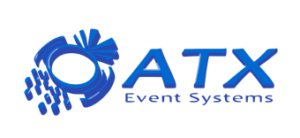Using Agile Methodologies for Planning Projects
 Agile project management is a type of project management that generally refers to building high-quality software on a continuous basis. Though Agile is almost always associated with technical projects involving computer software, the core methodologies can be applied to nearly any project you need to plan.
Agile project management is a type of project management that generally refers to building high-quality software on a continuous basis. Though Agile is almost always associated with technical projects involving computer software, the core methodologies can be applied to nearly any project you need to plan.
When you sit down to plan a project, odds are you want to do so in a way that helps you deliver a high-quality result in the quickest time frame possible, all while being flexible with requirements and deliverables. That’s the ideal, anyway. Right?
But odds are that once things get rolling, your project will start to stall out or face problems that your plan is not flexible enough to handle. As a project manager, you just want to deliver a high-quality result, but too often a lack of a system prevents managers from doing just that.
How Agile can help you plan your next project
Agile project management is made up of seven core components:
- Project requirements
- Project owner
- Project planning
- Execution and iteration
- Releases
- Feedback
- Retrospective
Though they have more technical names when used within software development, they can carry the same essential meaning for any type of project. As the project manager or planner, you are essentially the project owner. You’ve gathered requirements from external stakeholders (your clients) and have put together a project plan.
The core change here is that you want to create a project plan that’s broken down into manageable and logical components. Rather than simply do one-off tasks and then report that back to the client, you want to plan for a chunk of tasks that you want to complete and then essentially ‘release’ to your client.
This allows you to execute on enough tasks that show progress, while still getting items out to the client for their feedback. That feedback ensures that the rest of the project can be planned accordingly and that you can iterate on what you’ve already delivered, if necessary.
Creating that feedback loop is an important part of Agile project management. To ensure that you always deliver on quality, getting that feedback from stakeholders early and often is key. At the end of a project, it’s also important to have a retrospective. What went well, what didn’t, and where can you improve for next time. Iterating on your process is another benefit to using Agile project management methods.
But wait, there’s more!
Not only is Agile a great way to manage non-software projects, it’s also a way to collaborate on projects. Sometimes planning projects or events can be solitary work. Agile allows for more interaction with all of the moving parts so that you can be constantly collaborating and using the knowledge of others to better execute on your projects.
An essential element of Agile projects is collaboration among team members on an ongoing basis, not just in the requirements gathering phase of a project. For non-software projects, the input of different experts working together toward a common goal is just as important to ensuring positive project development. By allowing team members to comment in real-time, Agile-inspired workflows encourage creativity and help a project evolve positively.
So next time you have a project that you need to plan, give the Agile method a try. Even if you’re not creating software products, the method behind Agile can provide you with flexibility while keeping you on track and delivering a high-quality result.


